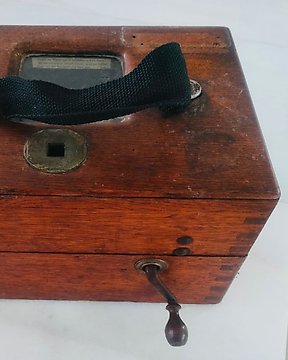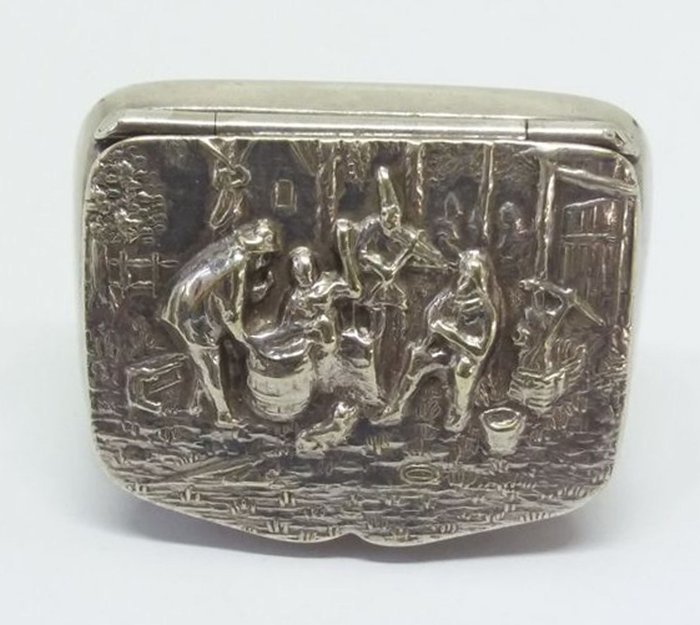
plasschaert - other - horloge - Bois
Nº 39027133

Nº 39027133

Signed Hans Jensen silver plated pill box.
12mm x 44mm x 32mm - Approximately 20g
It was designed by Danish Silversmith, Hans Jensen and bears his hallmark of a whale with raised tail. The Jensen company was formed circa 1900.
The pill box features in high relief repoussé, a pastoral scene of people eating and drinking either at a festival, a tavern or a farm. This scene of country folk gathered has been frequently referred to at online sites as “the Cracker Barrel Scene.” We can make out a fiddle player, a barrel, and dog--perhaps peasants relaxing or celebrating with music and drink.
Good condition - used with small signs of aging & blemishes
Hans Hansen (1884-1940) opened a goldsmith shop and smithy in Kolding, Denmark about 1906. Kolding was already well known for its silver and in particular for the well known Goldsmith Holger Kyster and the silverware he produced designed by famous silversmiths Th. Bindesboll, Joakim Skovgaard and Svend Hammerhoj.
By the 1920s Hansen was producing his own line based on his and H.F. Gross' designs. Initially the company produced flatware. Once that was successful they started with jewelry. The first pieces were designed by Hansen himself around 1931 but production of jewelry really began in 1932 with a collection designed by Hansen's son Karl Gustav Hansen.
Karl Gustav Hansen was born in Kolding on December 10, 1914. The younger Hansen showed an early aptitude for his craft and left school at 16 to become an apprentice to Einar Olsen a hollowware smith. In 1934, KGH presented his test piece, a teapot on a chafing dish and received the silver medal, the highest distinction in the Danish appprenticeship system. Shortly afterwards he enrolled at the School of Sculpture at the Art Academy but continued to work with silver.
After travelling in Europe KGH opened up a workshop with his father in Copenhagen where passers-by could watch KGH and three other craftsmen at work through a large window. KGH had his first larger exhibition of works in Copenhagen in May 1940.
The next month, his father died at only 56 years old. KGH was 25 and he took over the Hans Hansen Silversmithy. This collection was called "Future" and comprised about 50 pieces, including brooches, rings, clasps, earrings, etc. Other designers such as Bent Gabrielsen Pedersen and Bent Knudsen also worked for Hansen and by the 1980s Allan Scharff was the leading designer. In 1992 the firm joined with the Georg Jensen company.
Comment acheter sur Catawiki ?
1. Découvrez des objets d’exception
2. Faites la meilleure offre
3. Effectuez un paiement sécurisé